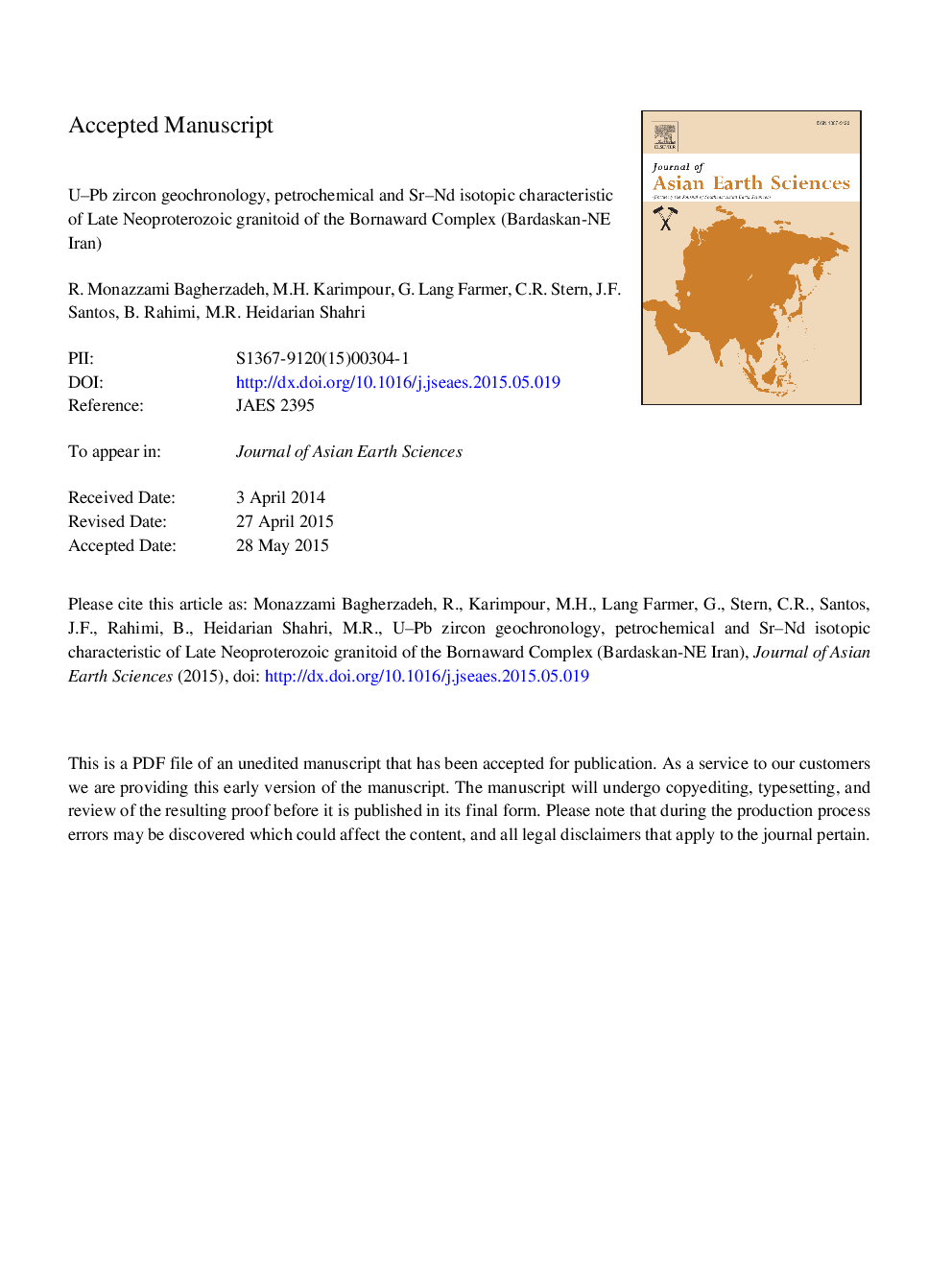| کد مقاله | کد نشریه | سال انتشار | مقاله انگلیسی | نسخه تمام متن |
|---|---|---|---|---|
| 6444122 | 1640358 | 2015 | 63 صفحه PDF | دانلود رایگان |
عنوان انگلیسی مقاله ISI
U-Pb zircon geochronology, petrochemical and Sr-Nd isotopic characteristic of Late Neoproterozoic granitoid of the Bornaward Complex (Bardaskan-NE Iran)
دانلود مقاله + سفارش ترجمه
دانلود مقاله ISI انگلیسی
رایگان برای ایرانیان
موضوعات مرتبط
مهندسی و علوم پایه
علوم زمین و سیارات
زمین شناسی
پیش نمایش صفحه اول مقاله

چکیده انگلیسی
The Bornaward Granitoid Complex (BGC) in the Taknar Zone is located in the northeast of Central Iranian Block. The BGC consists of granite, alkaligranite, syenogranite, leucogranite, granophyre, monzogranite, granodiorite, tonalite and diorite that have intruded into the center of Taknar Zone. These intrusive rocks affected by low grade metamorphism. Because of there are no reliable isotope dating data, for the Bornaward Granitoid Complex rocks have been proposed discordant ages (Jurassic, Cretaceous or even younger ages) by many studies. In the present study, new isotopic information based on zircon U-Pb dating has revealed the origin and time of the formation of the BGC. These new results do not confirm previously proposed ages. The results obtained from zircon U-Pb dating of the BGC rocks suggest late-Neoproterozoic (Precambrian) age (540-550 Ma). The Bornaward Granitoid Complex is middle-high metaluminous to lower-middle peraluminous and belongs to tholeiite, calc-alkaline to high-K calc-alkaline rock series with enrichment in LIL (Cs, Rb and Ba, U, K, Zr, Y, Th) and depletion in HIL (Sr and Nb, Ta, Ti) elements. Chondrite-normalized Rare Earth Elements (REE) plots indicate minor enrichment of LREE compared to HREE, and strong negative anomaly of Eu compared to other Rare Earth Elements. Furthermore, initial 87Sr/86Sr and 143Nd/144Nd range from 0.70351 to 0.71689 and 0.511585 to 0.512061, respectively, and initial εNd isotope values for granite, granodiorite and diorite range from â6.73 to 2.52. These all indicate that the BGC has derived from partial melting of distinct basement source regions with very high initial 87Sr/86Sr and undergoing extensive crustal contamination (S-type granite).
ناشر
Database: Elsevier - ScienceDirect (ساینس دایرکت)
Journal: Journal of Asian Earth Sciences - Volume 111, 1 November 2015, Pages 54-71
Journal: Journal of Asian Earth Sciences - Volume 111, 1 November 2015, Pages 54-71
نویسندگان
R. Monazzami Bagherzadeh, M.H. Karimpour, G. Lang Farmer, C.R. Stern, J.F. Santos, B. Rahimi, M.R. Heidarian Shahri,